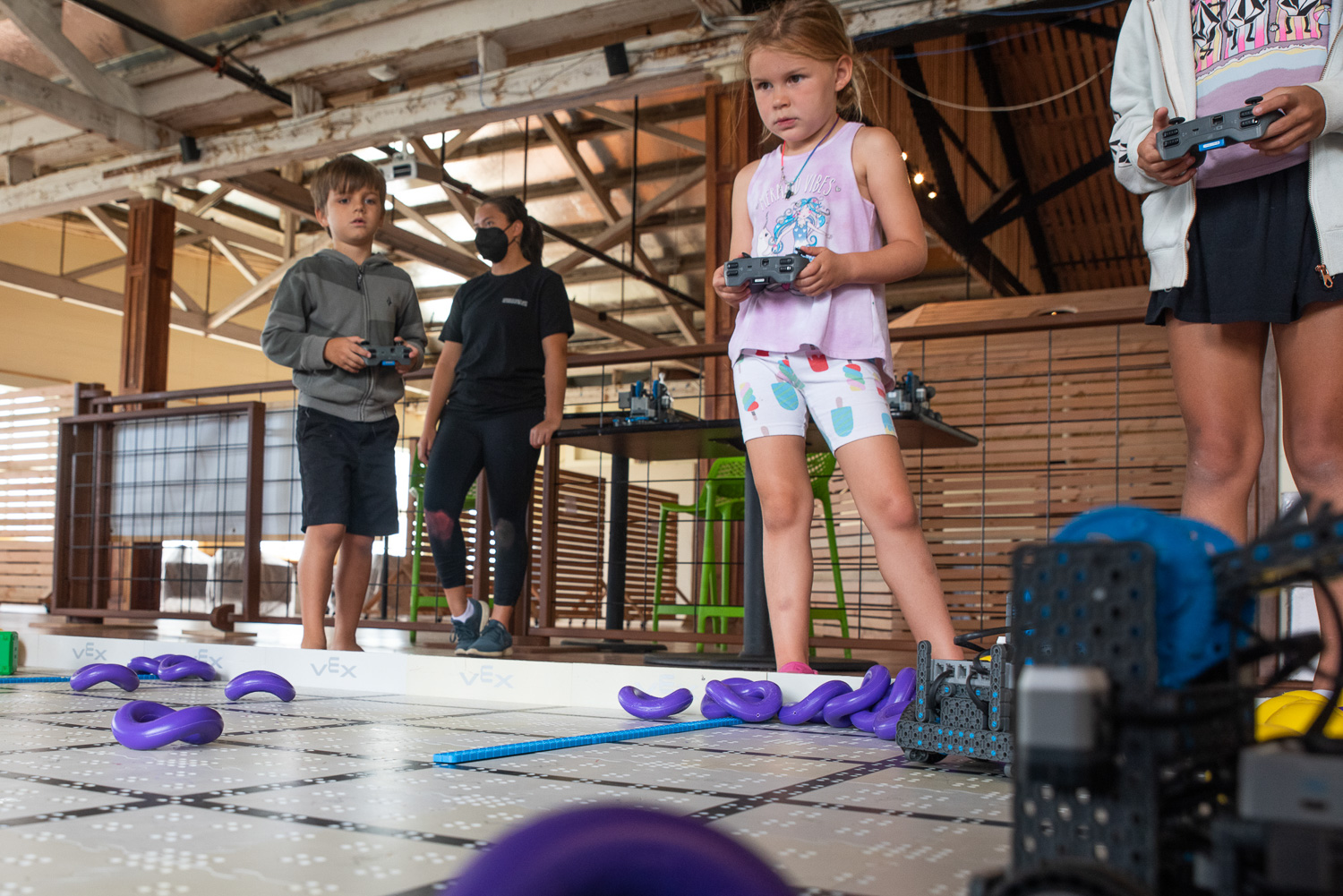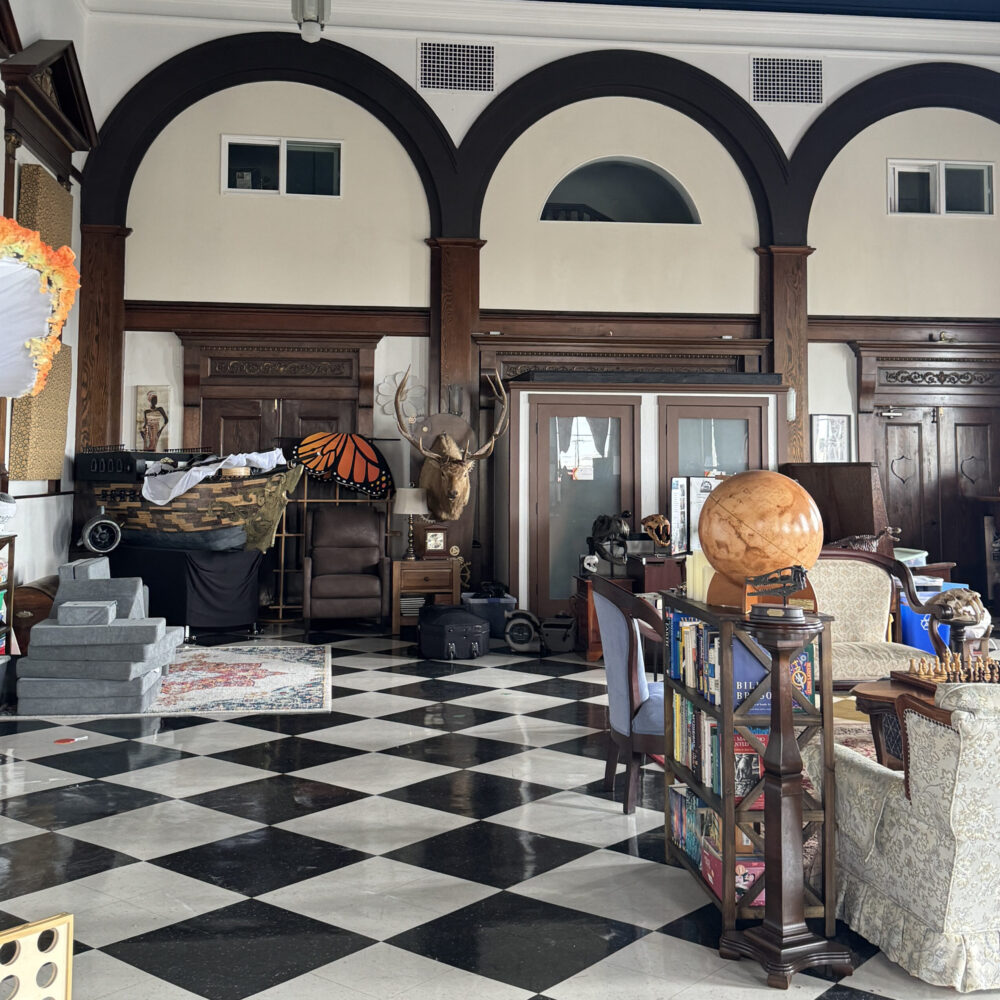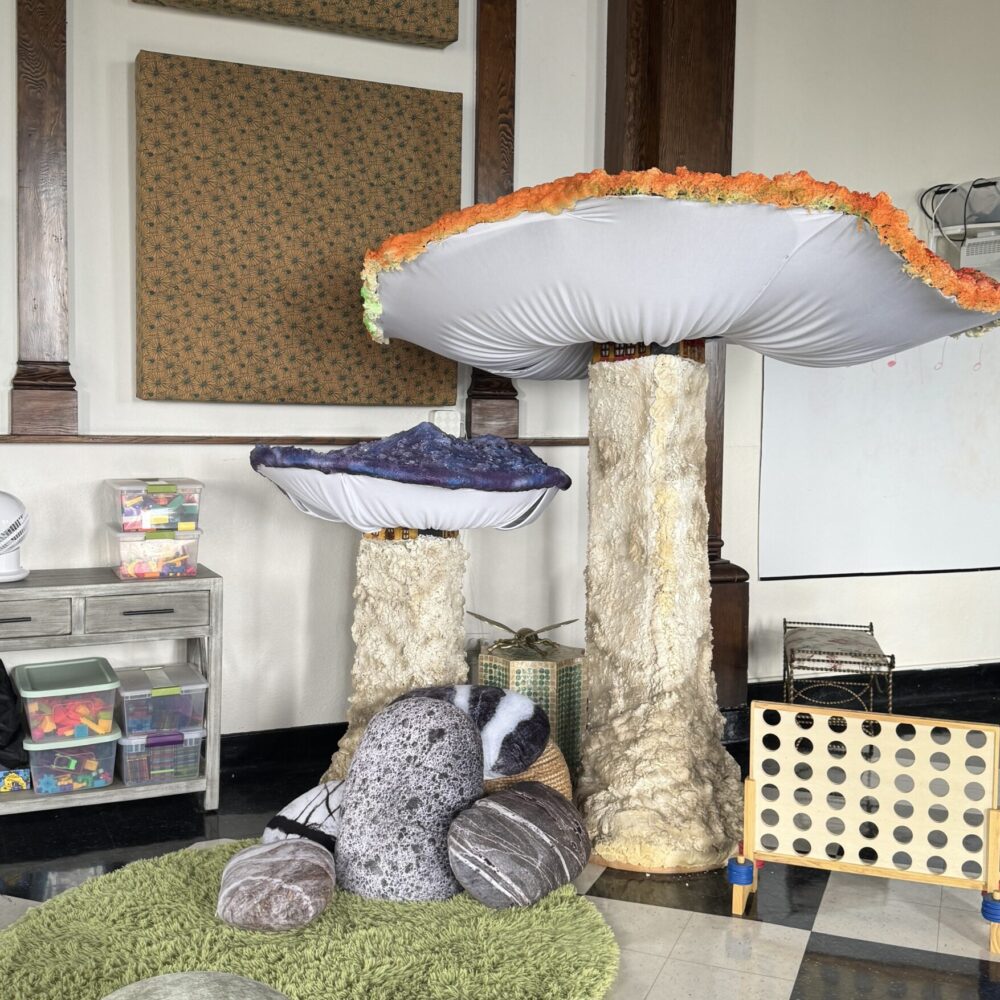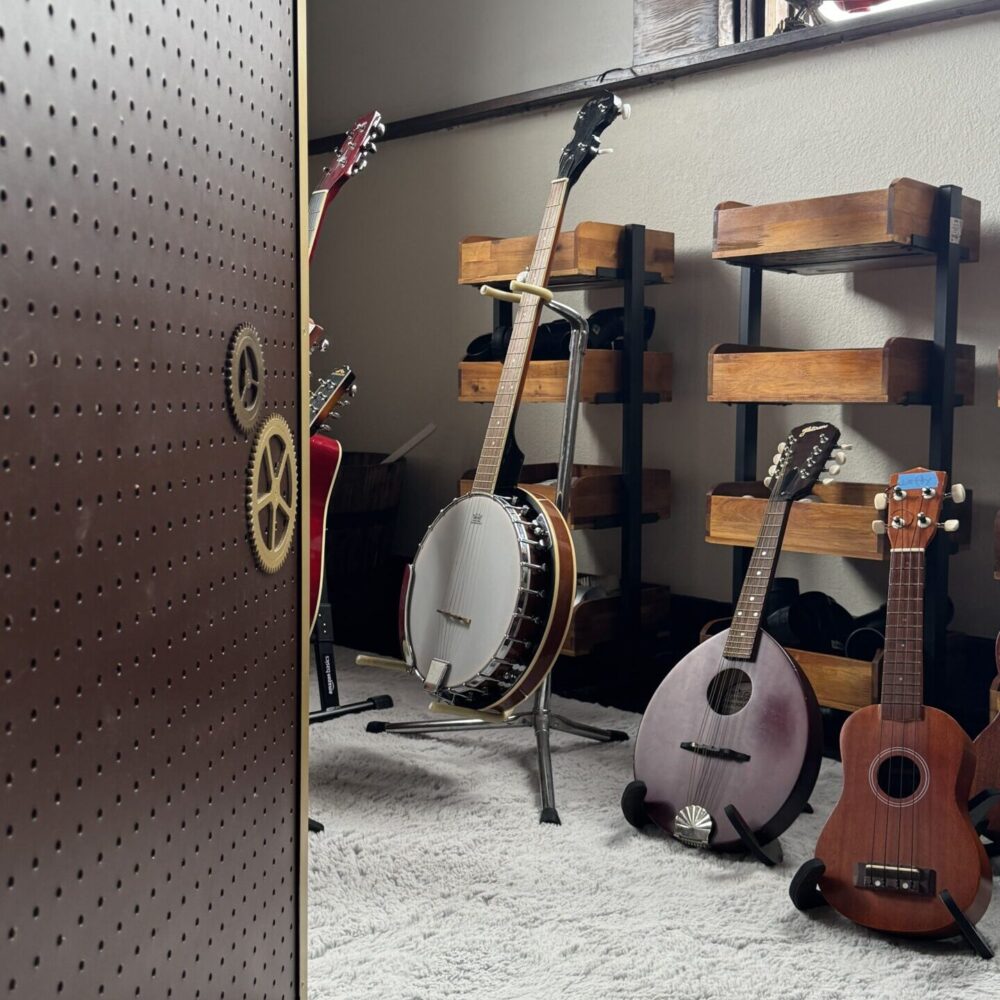From robotics to rocketry, Christian Wong and his team at Hawai‘i Science and Technology Museum fight for the future of education.
It was the saber tooth tiger that did it.
In a grand open space on the second floor of the historic Bishop Trust building in Hilo town, Christian Wong, founder and executive director of Hawai‘i Science and Technology Museum (HSTM), watched his son tinkering with the skeleton of a saber tooth tiger when it hit him: “We’re in an actual science museum now. We did it.”
After Christian took his love of science on the road for years, trekking his mobile museum across the vast community of east Hawai‘i Island, his vision of a more permanent gathering space where kids could learn about science, technology, engineering, arts, and math (STEAM) had finally come true.
Now no longer confined to his van, a permanent home for HSTM was the culmination of years of hard work and sacrifice, a milestone in a journey that might have turned out far differently.
The Touch Everything Museum
Unlike so many other museums in Hawai‘i, more traditional spaces where priceless artifacts and historical relics sit safely behind glass, HSTM is a place of exploration and engagement. Hands-on learning is encouraged, leading to the occasional broken piece or damaged display, small occupational hazards for a place where youth can be unafraid to embrace their exuberance for all things STEAM.
Scattered throughout the museum are fossil bones and mushroom models, books and chessboards and globes, musical instruments galore and experiential games that can consume hours of a child’s imagination.
What ends up filling the cavernous space is often at the direction of the kids themselves, not by curators or conservators. HSTM staff members pay close attention to what their young visitors gravitate to and what they openly ask for. “Our entire music program was driven by the kids that come to this site,” Christian recalled. “They’d make a beeline to the instruments and just stay all day playing.”
With most of the resources for large music arts programs focused on O‘ahu, the challenging logistics and costs can mean fewer opportunities for neighbor island children. Cutbacks in elementary music education programs in rural communities also mean those students are left with very few options.
HSTM Music Education Programs
Undaunted, Christian has taken to finding and procuring a small orchestra of instruments and partnering with Department of Education schools to teach fifth and sixth graders to play. For high school band kids engaged with HSTM, performing in a symphony like their counterparts based on O‘ahu is no longer just a dream.
In another turn of fate for a community that’s seen more of its youth leave the island for career opportunities elsewhere, HSTM’s new music director is a local boy who recently graduated with a music degree and wanted an opportunity to come home and teach.
The serendipity of a place like this—bringing together the youthful energy for knowledge and exploration while creating a space for community and giving—is hard to overstate. Even if that’s all it was, HSTM would still be a magical place for youth unlike any other on Hawai‘i island.
That unique quality isn’t lost on those most concerned about the future for their children, either. When the robotics center had its grand opening, 400 people showed up, many of them parents who’ve enthusiastically made it the busiest HSTM program by far. “I just got the sense that the whole community was behind us,” said Christian. “Everybody wanted to see that be a success.”
“The thing that stands out most to me is that at each point it became an act of willpower. The cumulative effects can be wearing. So it was rough.”
Christian Wong, Hawai‘i Science and Technology Museum
The Collaborative Effect
Things That Go Boom
Sometimes lost in the dramatic success of HSTM’s programs and its growing role in the community is what it took to get to this point. In the early years, as Christian took his mobile museum on the road to bring science to kids in remote communities, he was also a full-time firefighter and father. It was daunting and overwhelming, much like the situation public school teachers find themselves in, facing hours of unpaid work to make programs viable while also lacking materials and resources.
“Geological processes are these very long timelines from our perspective as human beings, and we assume they happen very slowly but they don’t. It’s boom, all of a sudden huge change happens and now that’s the new normal,” Christian said, describing the sudden turn of events that enabled him to go from being a solo part-time volunteer to full-time executive director with a regular staff that helps run the museum’s various outreach activities and programs. Today almost 30 people work as contractors or as volunteers to help manage HSTM’s growing needs. “We have a really, really good team all around.”

There are already partnerships in the works, starting with schools in the fastest-growing community in the state, one that also has a growing need for STEAM education support. Based on the district’s STRIVE-HI scores, Christian reached out to a local principal to discuss how HSTM might be able to help support a satellite robotics program at their school.
“I called her and said we have all the equipment and our team’s coming. She thought we were talking like two or three years in the future, and I said, ‘No, we’re doing this now,’” Christian recalled, laughing. That kind of speed and the ability to navigate around the red tape that would typically ensnare an innovative program for years are the advantages HSTM’s satellite museum model can offer to schools everywhere.
Investing in the Future
What’s clear is that although everyone says they support making STEAM a priority, schools continue to struggle with funding while also having to focus on an array of state and federal metrics, leaving these vital and necessary disciplines in perpetual need of resources.
Daily reminders of how quickly our society is evolving demonstrate that the need for STEAM education is only increasing. The crowds at HSTM’s weekend workshops and camps are a testament to that, and to the growing desire for more accessible educational opportunities for Hawai‘i Island youth. Christian estimates that maybe as little as 10% of the people on island know about HSTM’s work, even with its “super fans” buzzing about the excitement of hundreds of kids spending their weekends learning robotics, playing in a home grown band, or launching 3D printed rockets.
Principals from some of the island’s rural communities tell Christian that many students envision a future of shrinking or limited possibilities, of low-paying work and jobs that they will fall into rather than pursue. Yet, exposure to a different world of possibilities can sometimes point young eyes to a much different, much brighter future.
After a nearly four-hour hands-on rocketry workshop at a local elementary school, one excited kid showed Christian the power of HSTM’s impact, asking, “If I want to work for NASA, would it be better if I’m an electrical engineer or mechanical engineer?”
As he and the rest of the team look toward a future with more homegrown engineers and artists and scientists, Christian is still hard at work repairing the saber tooth tiger and lining up communities on Hawai‘i Island open to partnerships that can seed that future.
A constellation of satellite museums across the island, serving as centers of learning excellence in every community, means that even though they no longer use his van, HSTM will always be a mobile museum.
And that’s a future that suits Christian just fine.

Latest Hawaiʻi News
Read the latest Hawai‘i news about our grant-making, our partners, and how we are spending down




